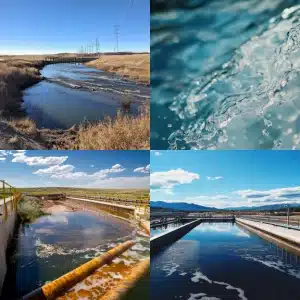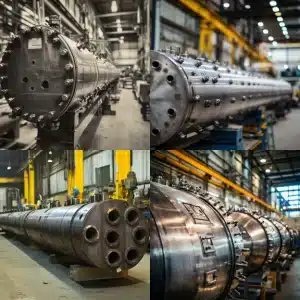
What Causes Pressure Vessel Explosion?
Pressure vessels, integral to numerous industries, are designed to operate safely under specific conditions. However, when things go awry, the results can be catastrophic. But what exactly triggers a pressure vessel explosion? Let’s delve into the underlying causes and understand the factors at play.
Overpressurization
The most direct cause:
a. Exceeding Design Limits: Every pressure vessel has a maximum allowable working pressure (MAWP). If the internal pressure surpasses this limit, the vessel is at risk of rupture.
b. Faulty Relief Systems: Pressure relief devices, like valves, are designed to release excess pressure. Malfunction or blockage of these systems can lead to overpressurization.
Material Fatigue
a. Repeated Stress: Over time, the constant stress from pressurization and depressurization can weaken the vessel’s material, leading to cracks or structural failures.
b. Corrosion: Chemical reactions, especially in vessels storing corrosive substances, can erode the vessel’s walls, reducing their thickness and strength.
Flawed Design or Manufacturing
a. Inadequate Material Selection: Using materials not suited for the intended pressure or content can lead to failures.
b. Poor Workmanship: Flaws like improper welds, misaligned sections, or inadequate seals can compromise the vessel’s integrity.
External Factors
a. Physical Damage: External impacts, such as from machinery or falling objects, can damage the vessel, making it susceptible to explosions.
b. Thermal Stresses: Rapid temperature changes can introduce stresses, especially if the vessel material isn’t designed to handle such fluctuations.
Ignition Sources
In vessels containing flammable substances:
a. Sparks or Flames: Nearby operations involving welding, cutting, or open flames can ignite the contents if there’s a leak or release.
b. Electrical Malfunctions: Short circuits or faulty equipment can serve as ignition sources in the presence of combustible gases or vapors.
Inadequate Inspections and Maintenance
a. Missed Warning Signs: Regular inspections can identify issues like corrosion, cracks, or equipment wear. Neglecting these checks can lead to unnoticed problems escalating into major threats.
b. Deferred Maintenance: Postponing necessary repairs or replacements can jeopardize the vessel’s safety.
Operator Error
a. Lack of Training: Operators unfamiliar with the vessel’s workings or safety protocols might inadvertently cause conditions leading to an explosion.
b. Miscommunication: Inadequate handovers or misinterpretation of readings can lead to errors in judgment or operation.
Incompatible Chemical Reactions
a. Reactive Contents: Storing chemicals that react with each other or with the vessel’s material can generate excessive heat or gases, leading to overpressurization.
b. Contamination: Accidental mixing of incompatible substances can trigger reactions, increasing the internal pressure rapidly.
Aging Infrastructure
a. Wear and Tear: Like all equipment, pressure vessels have a finite lifespan. As they age, their components can degrade, making them more susceptible to failure.
b. Obsolete Designs: Older vessels might not meet current industry standards or might be ill-suited for new operational demands.
Environmental Conditions
a. External Pressure: In scenarios where external pressure (like water depth in underwater applications) exceeds internal pressure, vessels can implode.
b. Natural Disasters: Earthquakes, floods, or other natural events can damage pressure vessels or their support systems, leading to potential failures.
Inadequate Safety Systems
a. Failed Alarms: Alarm systems designed to alert operators of abnormal conditions might malfunction or be ignored, leading to unchecked risk escalation.
b. Bypassed Safety Protocols: In some instances, safety systems might be deliberately bypassed to expedite operations, a dangerous practice that can lead to catastrophic outcomes.
Improper Modifications
a. Unauthorized Alterations: Any modifications to a pressure vessel, like adding nozzles or changing attachments, should be done following industry standards. Unauthorized or poorly executed alterations can compromise vessel integrity.
Thermal Shock
a. Rapid Temperature Changes: Introducing cold contents into a hot vessel or vice versa can cause rapid contraction or expansion, leading to structural stresses and potential failure.
Prevention: The Best Cure
While understanding the causes of pressure vessel explosions is crucial, the emphasis should always be on prevention. This involves:
a. Regular Training: Ensuring that all personnel are well-trained and updated on the latest safety protocols.
b. Routine Inspections: Employing regular checks to identify and rectify potential issues before they escalate.
c. Investing in Quality: Opting for high-quality materials, designs, and manufacturing processes to ensure vessel longevity and safety.
b. Staying Updated: Keeping abreast of industry advancements, regulatory changes, and best practices to ensure operations are always aligned with the highest safety standards.
Pressure vessel explosions, while rare due to stringent industry standards and regulations, can have devastating consequences. Understanding the potential causes underscores the importance of rigorous design, regular maintenance, operator training, and adherence to safety protocols. By respecting the power and potential risks of pressure vessels, industries can harness their capabilities while ensuring the safety of personnel, equipment, and the environment.
Note: Safety is paramount when dealing with pressure vessels. Always consult with industry experts and adhere to manufacturer guidelines and regulatory standards.




